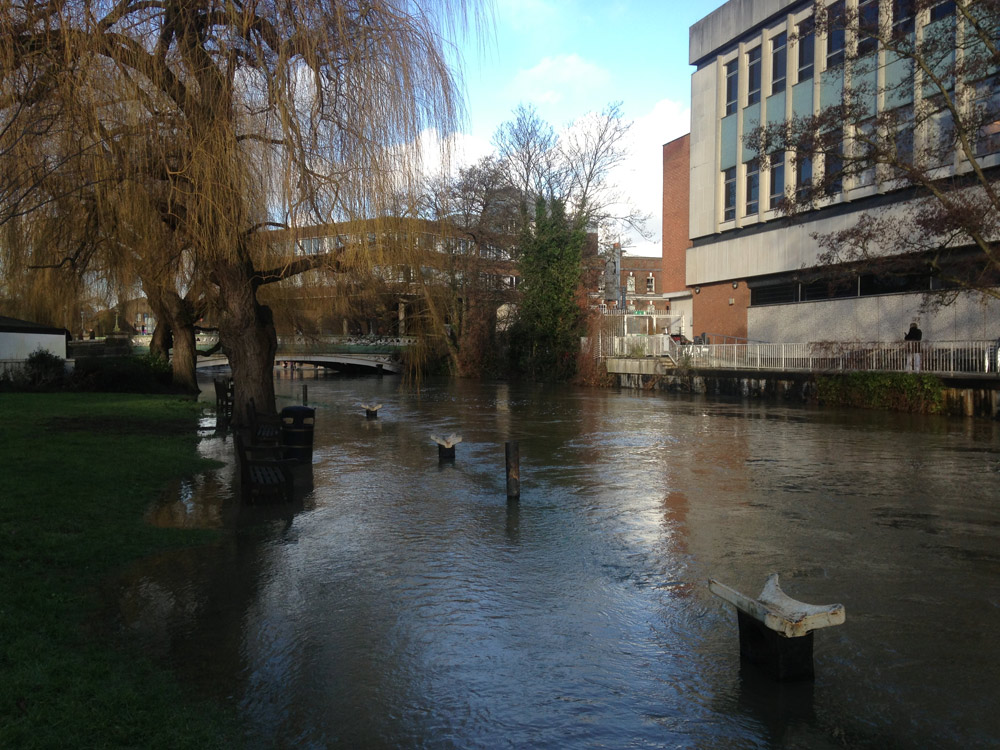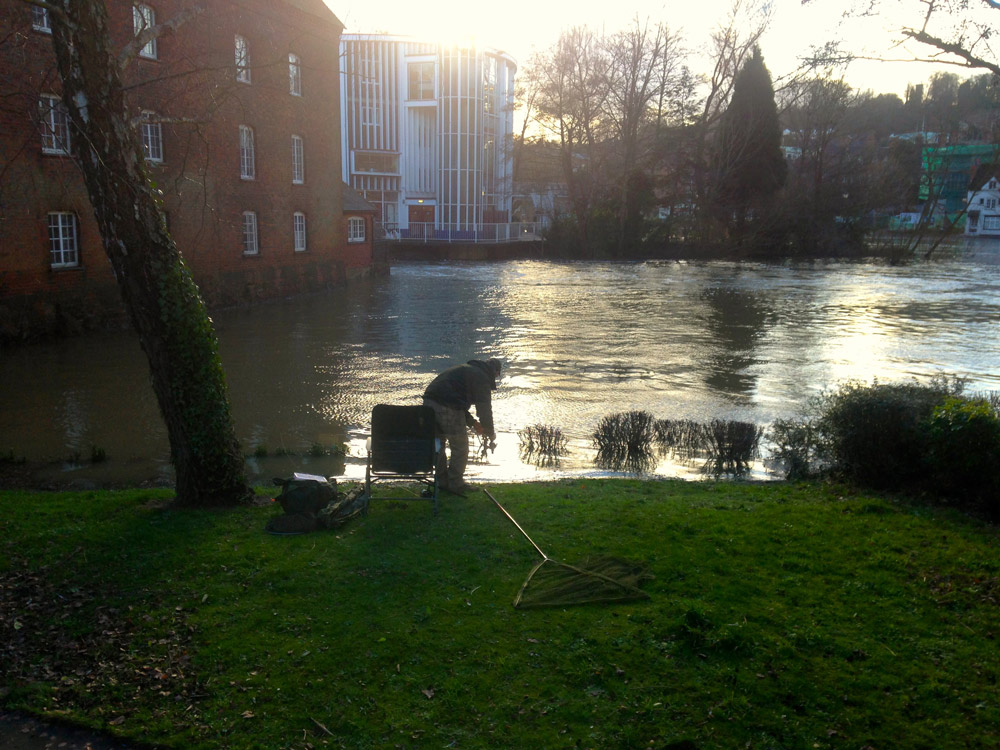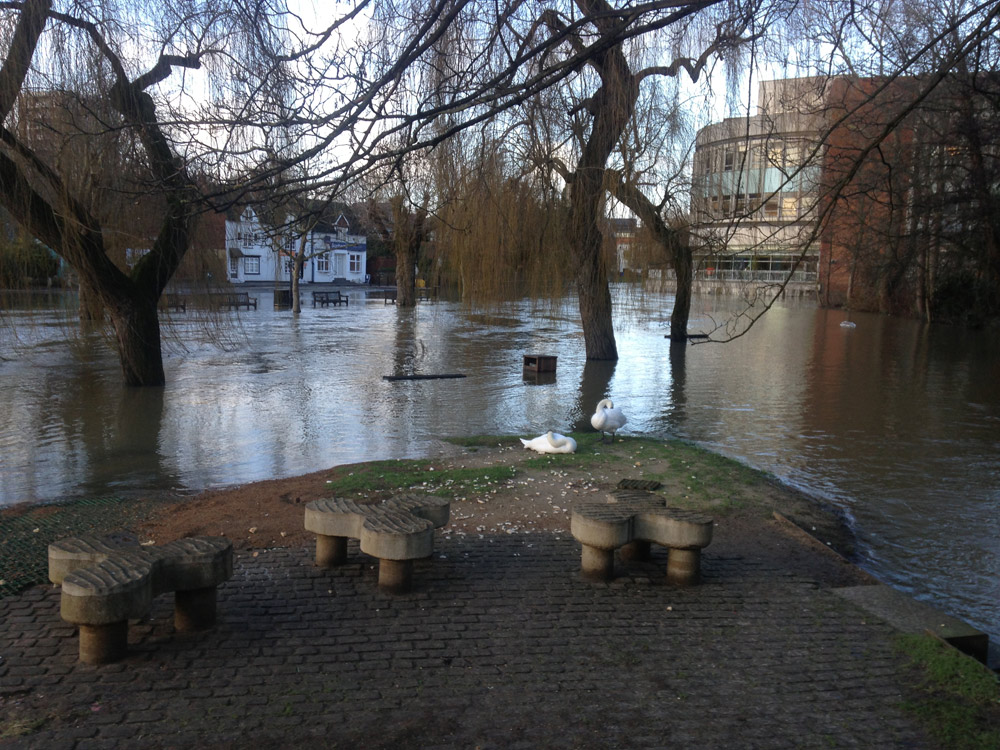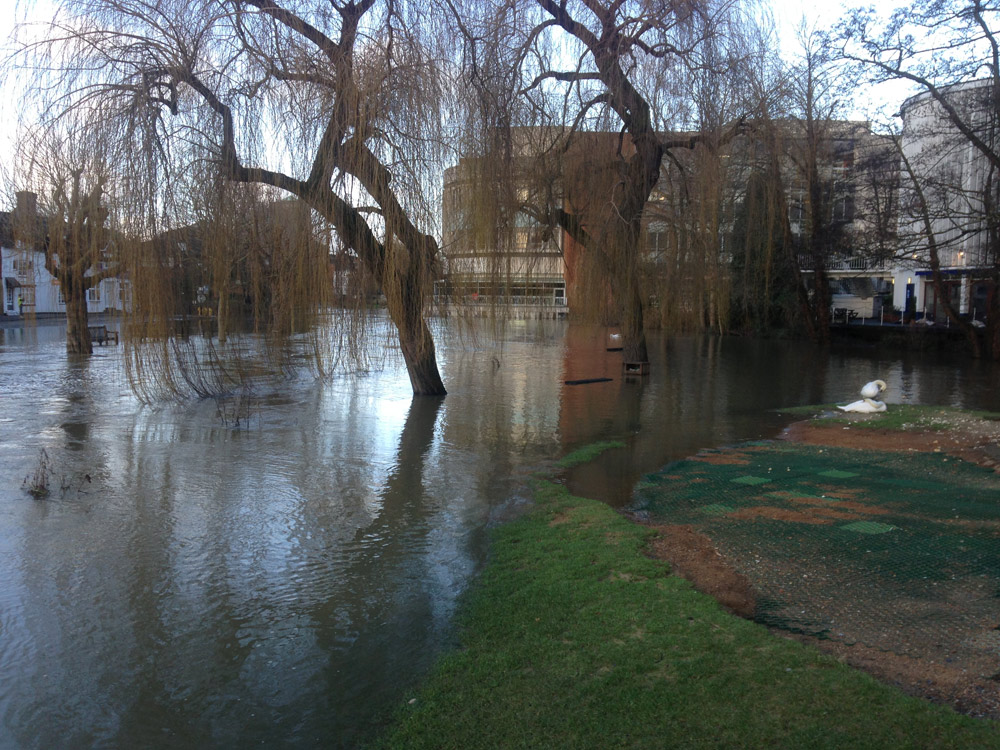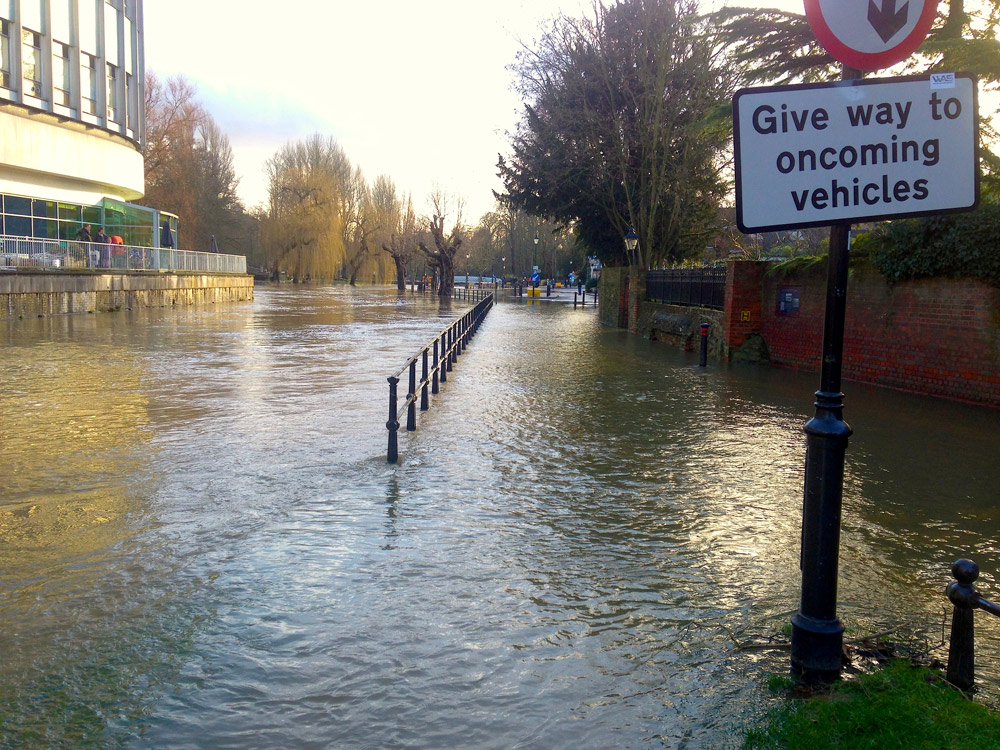From River Wey to River Whoa!
The River Wey has burst its banks in spectacular fashion over the festive period, leaving bridges and car-parks cordoned off by police as the water levels reached heights not seen for decades. Employees of Guildford Borough Council, hoping to down desk related tools early for Noël, sat helpless in their Millmead offices as they watched the River Wey knock on the front door wishing one and all a very soggy Christmas. Shoppers hoping to use Bedford Road car park were turned away unless they had sensibly arrived in a row boat and waders. Even then Captains leaving boats moored to the pay and display machine did so at their own risk - a few locals decided to take advantage of the deep water with a winch, wakeboards and a camera possessing friend. How irresponsible, someone may have got wet.
To see the River Wey breach it banks to this extent is quite an awesome sight, especially if witnessed at the moment the river level surpasses the height of the bank. The water races at a breathless pace, owning everything in its path. Although the recent flood is one of the worst breaches for decades, thanks to improved flood defences it is by far not the worst. The town bridge may look old but in comparison to other local landmarks, it is relatively new. On 16th February 1900 the River Wey flooded enormously. Moon’s timber yard, situated just down-stream from the bridge, was submerged - the powerful current taking the contents of the yard with it at a devastating rate of knots. By morning the old town bridge was irreparably damaged, the crumbling remains still being consumed by a raging torrent before the curious looks of shocked townsfolk. The current town bridge was built two years later (a plaque was added to the new steel bridge to celebrate its opening & commemorate the loss of the old stone one). The new bridge also found itself a little beaten up just four years later in August 1906, owing this time to a powerful thunder storm accompanied with gales force winds. The Surrey Advertiser reported the damage to the bridge was caused by a large elm tree on the west bank of the river (by Moon’s timber yard). It reported that the felled tree ‘came into contact with the parapet of the bridge, and for a distance of some three or four yards the steel was smashed to atoms’.
On 26th December, 1927, 1ft of snow fell on Guildford – a day late for a white Christmas, disappointing some locals. The New Year was welcomed in with a slight rise of temperature, followed by a day’s heavy rain. By 3rd January the river had swollen and broken its banks, resulting in Friary Street being flooded, leaving a trail of silt crusted destruction in its wake once it had receded. It was not unusual for Friary Street and Onslow Street to flood whenever the river burst and both areas again suffered tremendous loss of stock and business due to flooding in June 1936 despite some attempt being made to improve defences. For whatever reason - perhaps local businesses didn’t make too much of fuss in the aftermath of these events and quietly accepted the risks, lessons do not seemed to have been learnt at the time. It wasn’t until 1968 the penny finally dropped that perhaps the flood defences needed seriously addressing. Rain started to fall on Saturday night, 14th September, 1963 and continued to pour throughout the Sunday with an amount of 3.75 inches recorded by an amateur meteorologist. By Monday the River Wey had broken it banks on a grand scale – the bottom of the High Street and the entirety of Friary Street were left submerged in 6ft of dirty water. A gentlemen’s outfitting shop in Friary Street, owned by Alderman R.M. Hardy, reported a loss of stock to the sum of £10,000. An attempt was made to recover some of the losses by selling flood-damaged shirts for 5 shillings (25p in new money). Courts, the furnishing store on the corner of Millbrook suffered £15,000 of damage – first surveyed by the manager via a boat and broken window.
Staff at the Yvonne Arnaud Theatre in Millbrook sensibly moved as many stage props and sets upstairs on the Sunday but still the theatre found itself closed for several weeks when the flood water surged to above the stage and the first few rows of seating. Havoc was again wreaked on Onslow Street and Bedford Road, leaving shops and businesses damaged and unable to operate whilst also rendering one of Guildford’s main roads impassable. The flooding of Plummers was to be the most expensive of all the insurance claims, Guildford Fire Brigade were employed pump out 5,000,000 gallons of muddy water which had flooded the entire basement and finally peaked at a level of 3ft on the ground floor. An enormous amount of stock was written off as well as causing huge amounts of damage to the shop itself. The residents of Walnut Tree Close, Bedford Road and Riverside, on the Farnham Road, suffered huge material loss when water gushed in faster than furniture could be moved to safety. Surrey Police, with the help of the Army, used inflatable dinghies to evacuate some 300 residents to safety. Most sought sanctuary at the Sandfield Terrace Drill Hall with kind support of the WRVS. When the floods subsided the people of Guildford, alongside the Red Cross, the WRVS, the WRACC and local Scout and Girl Guide troops, pulled together to help those affected. Guildford Borough Council sent refuse trucks to help with the clean-up.
The 1968 flood was on a level the authorities claimed happen once every 1000yrs; nevertheless it was felt that the river defences needed serious investment. As the face of Guildford changed over the ensuring decades, the river defences have been improved vastly - to the point that this Christmas we locals gaped in awe at the new Millmead Marina, normally we just call it the plain old Millmead Car Park. I am happy to admit that I am not an engineer, nor to do I possess much knowledge of flood defences but I suspect some tinkering may be required, either that or we’ve lost 940yrs somewhere.

